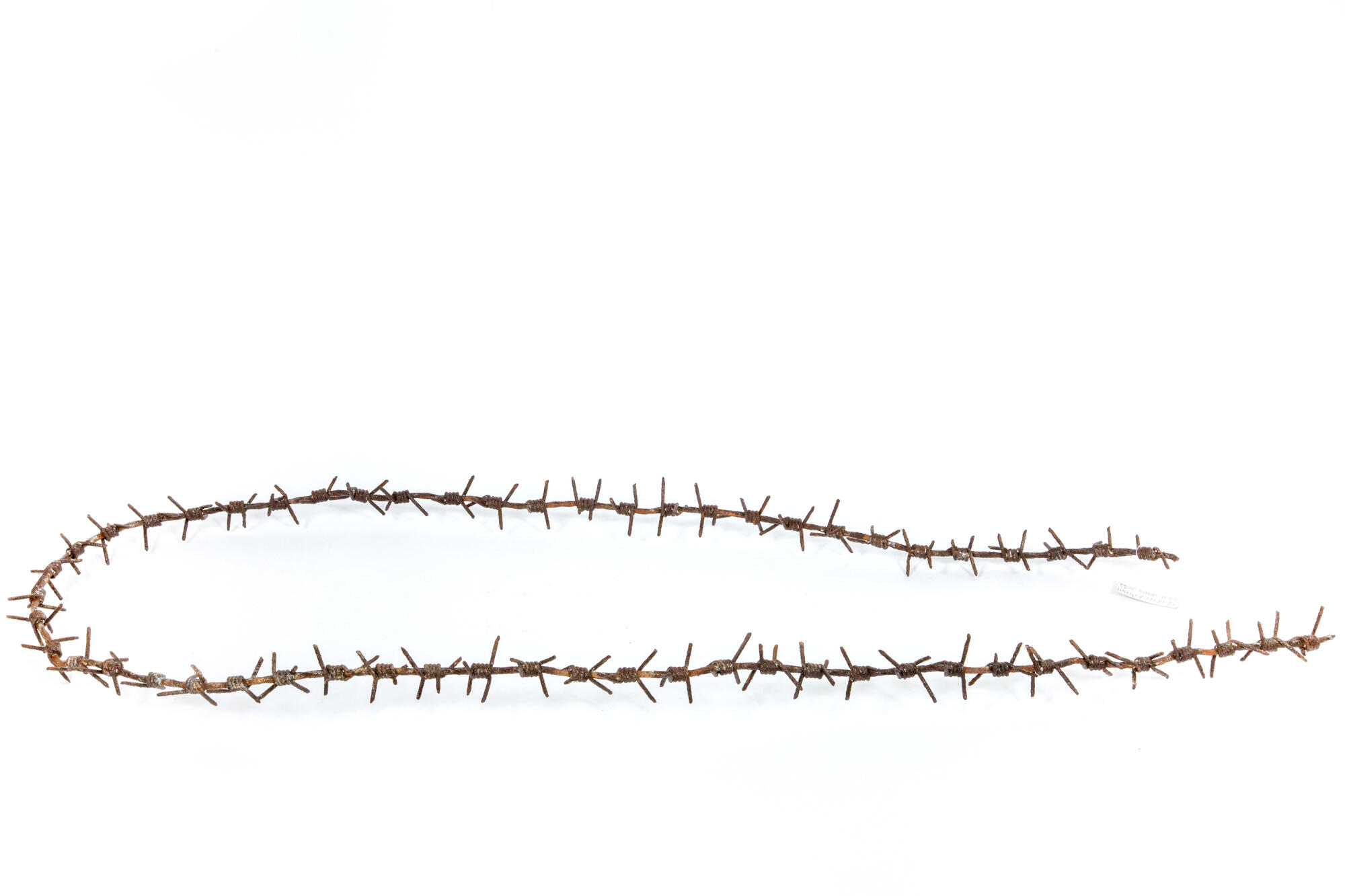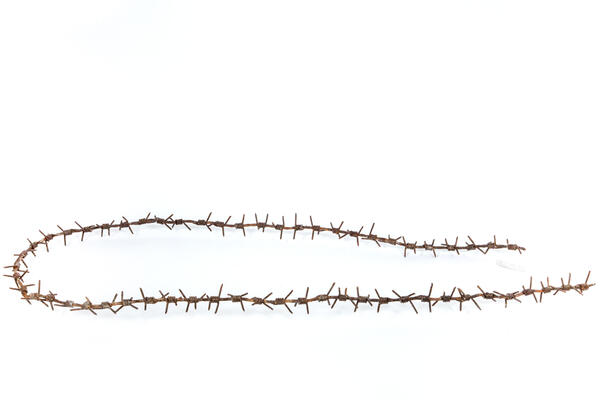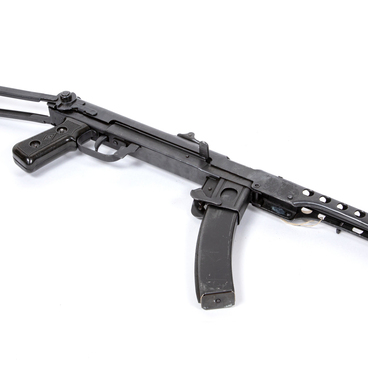The German protective barbed wire was discovered in 2010 during battlefield excavations, conducted in the Nelidovsky district, Tver Oblast. Vyacheslav Derkachev, a member of the Noyabrsk joint search party ‘Vitalis’, transferred it to the museum.
Frenchman Louis François Janin patented the double wire with diamond-shaped metal barbs in 1865. American Mike Kelly suggested using it to protect pens with livestock from wild animals. In 1874, Isaac Ellwood and Joseph Glidden improved the wire with the help of ‘hedgehogs’ — they came up with the idea of twisting small sharp wires around the main one. They patented this invention and began to produce barbed wire on an industrial scale.
The German military wire, as well as the agricultural wire, was made of metal. The ‘hedgehogs’ or ‘sharp spikes’ were fixed on it. There were 14 (or even more) spikes per one meter.
The barbed wire was one of the elements of fortification — artificially created barriers that strengthened the location of the troops relative to the enemy. Effective barbed wire barriers began to be mass used in the First World War, during trench warfare on the Western Front in 1914.
The purpose of the trench warfare was to exhaust the enemy by slowly destroying human and material resources. Tens and hundreds of kilometers of multi-row wire barriers, combined with massive machine-gun and artillery fire, disrupted any attacks and exhausted the approaching side. The wire forced the soldiers to stand up under machine gun fire as it did not allow them to move and scratched through their clothes. Many died on the spot due to blood loss or later in the hospital from a blood infection.
Frenchman Louis François Janin patented the double wire with diamond-shaped metal barbs in 1865. American Mike Kelly suggested using it to protect pens with livestock from wild animals. In 1874, Isaac Ellwood and Joseph Glidden improved the wire with the help of ‘hedgehogs’ — they came up with the idea of twisting small sharp wires around the main one. They patented this invention and began to produce barbed wire on an industrial scale.
The German military wire, as well as the agricultural wire, was made of metal. The ‘hedgehogs’ or ‘sharp spikes’ were fixed on it. There were 14 (or even more) spikes per one meter.
The barbed wire was one of the elements of fortification — artificially created barriers that strengthened the location of the troops relative to the enemy. Effective barbed wire barriers began to be mass used in the First World War, during trench warfare on the Western Front in 1914.
The purpose of the trench warfare was to exhaust the enemy by slowly destroying human and material resources. Tens and hundreds of kilometers of multi-row wire barriers, combined with massive machine-gun and artillery fire, disrupted any attacks and exhausted the approaching side. The wire forced the soldiers to stand up under machine gun fire as it did not allow them to move and scratched through their clothes. Many died on the spot due to blood loss or later in the hospital from a blood infection.



